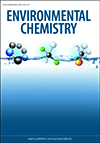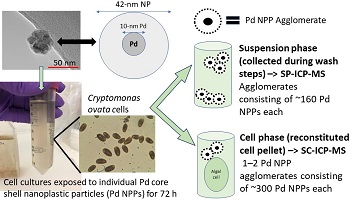Environmental context. Mitigating the environmental fallout of industrial accidents is crucial. In a recent study, researchers conducted tests on model substrates to explore the effectiveness of bioremediation in treating complex refinery contaminants resulting from both accidental and deliberate facility damage. The research reveals that bioremediation can be a promising, eco-friendly solution for cleaning up such pollutants, aligning with broader efforts to combat environmental harm resulting from industrial incidents.

Environmental Chemistry
Volume 21 Number 5 2024
Environmental context. Plastic pollution is widespread and continues to be a major concern, both for the environment and human health. Identifying nanoplastics is challenging but it is important to understand how they behave once in the environment. It is shown that a combination of single particle (SP)– and single cell (SC)–inductively coupled plasma–mass spectrometry (ICP-MS) can be used to quantify nanoplastics on a per cell basis after exposure to algal cells. (Image credit: E. C. Bair.)





